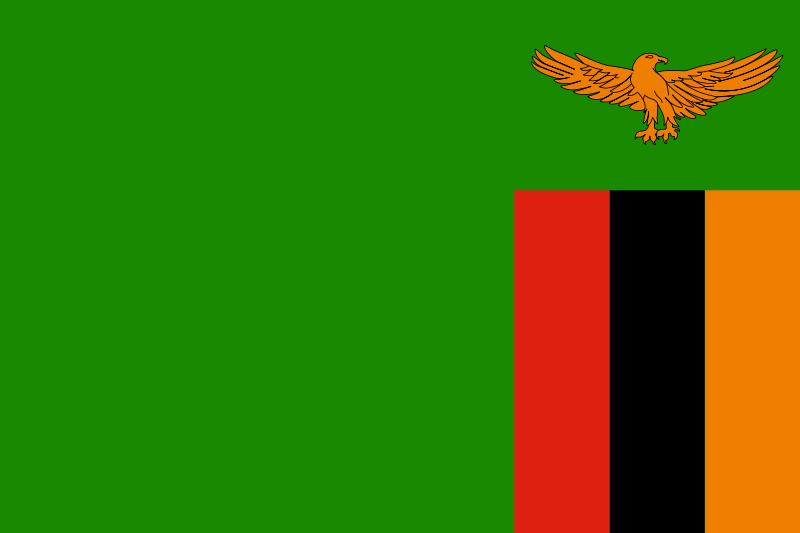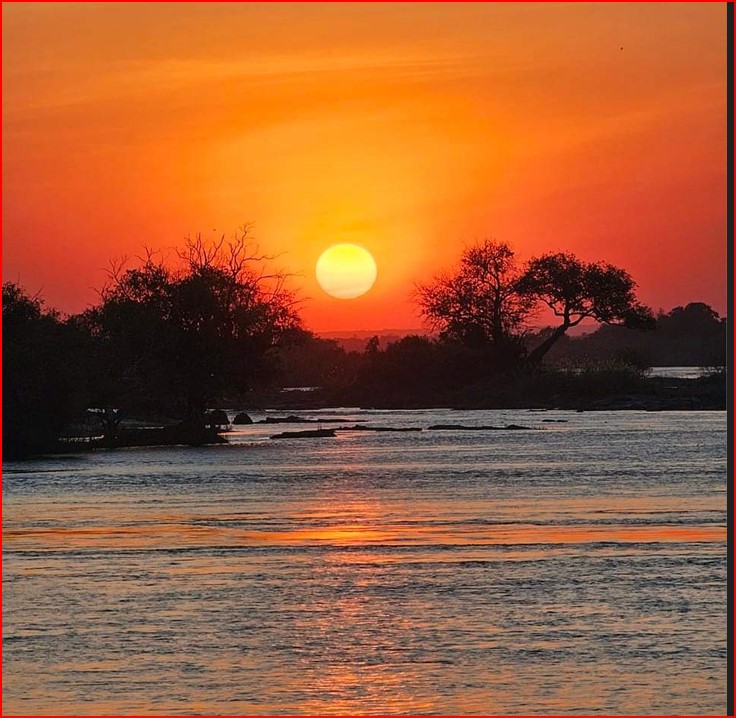
On 24 October, 1964 Northern Rhodesia (now known as Zambia) gained independence from Britain with Kenneth Kaunda as the country’s first president, and proclaimed one-party rule. Their independence came four years after the famous speech “The winds of change” by British Prime Minister Harold Macmillan. The Country’s taste of independence emerged ten months after the collapse of the Federation of Rhodesia and Nyasaland, with Northern Rhodesia becoming the Republic of Zambia.

Sunset in Zambia
In the list of UNESCO World Heritage Sites in Zambia, only one site made the list: Mosi-oa-Tunya / Victoria Falls. This is a natural site and it was inscribed in 1989.
The 2010 census records over 30 major languages spoken in Zambia. Seven of these are officially recognized as Zambia’s regional languages: Bemba, Nyanja, Lozi, Tonga, Kaonde, Luvale, and Lunda. English, the country's official language, is spoken by only about 2% of the population as a first language, but it's the most commonly used second language, especially by those with high education levels. The census indicates that Zambia's most widely spoken languages are Bemba (spoken by 35% of the population), Nyanja or Chewa (20%), Tonga (12%) and Lozi (6%).
An urban variety of Nyanja (Chewa) is the lingua franca,( which is a mixture of Italian with French, Greek, Arabic, and Spanish, formerly used in the eastern Mediterranean) is used in the Capital of Zambia. The Capital being Lusaka. Nyanja, (The Nyanja is also known as Chewa and Tonga language groups are also important, together accounting for more than one-fifth Zambia's population. Nyanja languages are spoken in the Eastern and Central Provinces, while Tonga languages are spoken mainly in the Southern and Western provinces.) Tonga is also widely spoken as a second language throughout Zambia. Bemba, the Country's largest indigenous language, also serves as a lingua franca, (for meaning refer to above) in some areas.
Since its independence in 1964, Zambia has been celebrating 8th of March as International Women’s Day. The main purpose behind this is to celebrate women’s achievements and inspire young women to come forward and exercise their choice freely. Their achievements are celebrated and the whole day is dedicated to empower women.
Each year United Nations declares a theme for International Women's Day. The Zambian citizens happily take part in these events. The Women’s Day celebration is not only restricted to mere celebrations in Zambia but this occasion has always targeted at making the women of the Country, more conscious about their rights and freedom. The literacy rate of women has also risen to around 56% according to 2015 estimate.
Being a third world country with a per capita GDP of $1801.9 as of 2014 records, Zambia, being unable to pay for medical help suffers a lot from health related issues. Consequently maternal deaths during pregnancy and childbirth rose very high. To overcome this major problem the Zambian Government abolished fees for all maternal health services. In women’s day, particularly, Zambia remains committed to overcome these challenges by campaigning and promoting women’s health.
In 8th of March, people throughout Zambia celebrate the day much like a festival. Thousands of people gather in the streets and greet one another “Happy Women’s Day” and lead a march on. Dressed in their best 'chitenge' outfits - a Zambian fashion essential, NGO’s, Government Ministries, and thousands of common people attend the march. Road shows and Dramas are being held in several places. Schools, Colleges, Offices and Industries remain closed, as it is a National holiday- declared by Zambian Government.
African American Registry, (2011) ‘Zambia gains independence’, [online] Available at www.aaregistry.org [Accessed 21 September 2012]|
Exploring Africa(2011) ‘Unit Two: Studying Africa through Social Studies’[online] Available at https://exploringafrica.matrix.msu.edu [Accessed 21 September 2012]|
South African History Online, ‘Kenneth Kaunda becomes the Prime Minister of Northern Rhodesia (Zambia)’, [online], available at www.sahistory.org.za (Accessed: 21 September 2012)